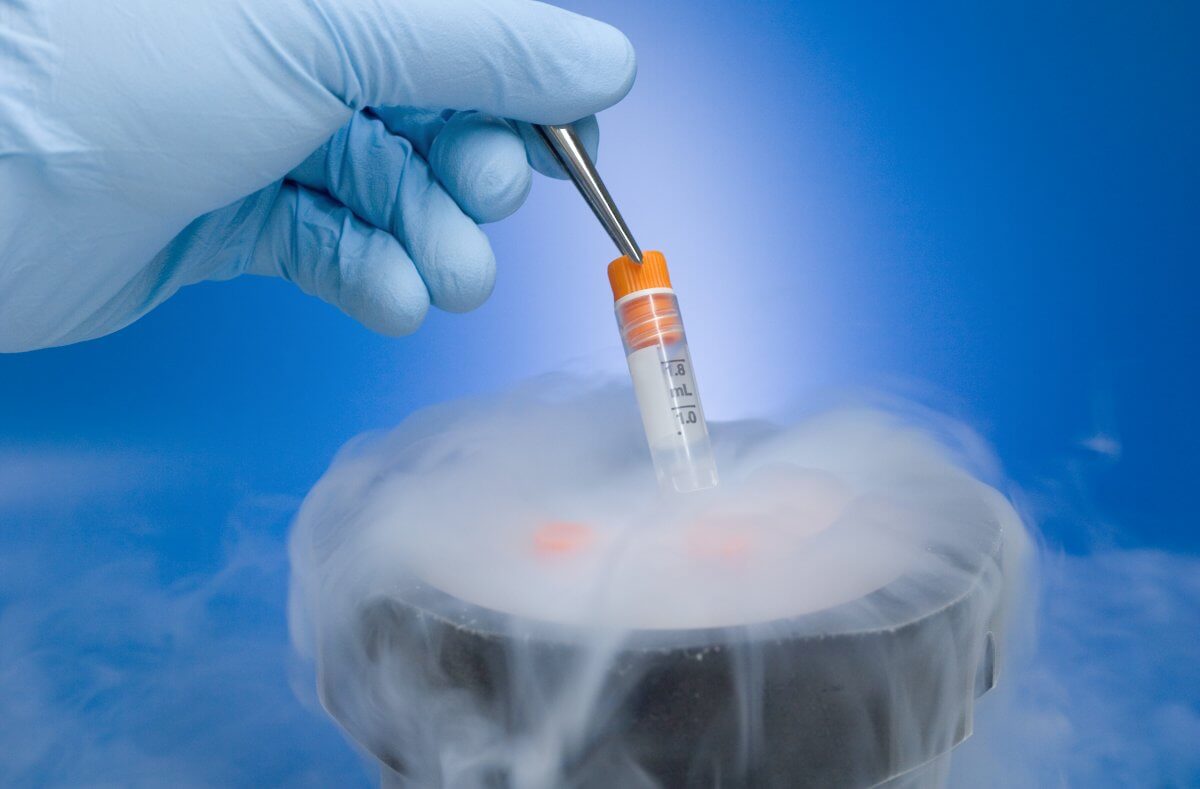In 2021, more than 97,000 infants were born in the U.S. from more than 400,000 cycles of assisted reproductive technology. Of these cycles, 167,689 used eggs or embryos that were frozen for future use.
In-vitro fertilization (IVF) and frozen embryo transfers make gestational surrogacy possible, going beyond the traditional aspects of assisted reproductive technologies.
Using frozen embryos on your IVF journey not only enhances the chances of success in the surrogacy process but also brings about several advantages for intended parents who want to grow their family.
To learn more about what freezing your embryos might look like during the surrogacy process, fill out our form.
You can also follow our Instagram and hear from other intended parents who have used frozen embryos for their surrogacy journey.
How Does Surrogacy With Frozen Embryos Work?
In-vitro fertilization plays a pivotal role in the surrogacy medical process. There are two main phases: Embryo creation and the embryo transfer.
Embryo creation
Your fertility specialist will perform a procedure to retrieve mature eggs. These eggs will be fertilized using the intended father’s sperm to create embryos. If you do not have viable eggs or sperm, you can use donor gametes.
By creating multiple embryos at once, you increase your surrogate’s chances of becoming pregnant. Not every egg that’s retrieved will become an embryo and not every embryo is viable. With your consent, additional embryos can be frozen for future use.
If you’ve attempted IVF prior to surrogacy, you may already have frozen embryos.
Frozen Embryo Transfer (FET)
Once an embryo has formed, it will be transferred to your surrogate’s uterus for implantation.
If the first transfer doesn’t take, you can use one of your additional embryos without having to repeat the egg retrieval and embryo creation process, saving you time and money.
Frozen embryos are typically stored and monitored at hospital facilities, like labs or commercial reproductive medicine centers. They can be safely preserved for 10 years and even longer.
How are Embryos Frozen?
Embryos are frozen through a process known as vitrification. This is done in two stages:
- The embryo is exposed to cryoprotectant agent to the embryos, which acts like antifreeze and prevents ice crystals from forming.
- The embryos are quickly placed into liquid nitrogen at -321 Fahrenheit and stored in straw-like containers.
Benefits of Frozen Embryo Transfers In Surrogacy
1. Controlled Implantation and Reduced Risks
One of the key benefits is the ability to implant embryos one at a time, reducing the risks associated with multiple pregnancies. This approach not only safeguards the health of the surrogate but also minimizes potential complications during the pregnancy.
The risk of Ovarian Hyper Stimulation Syndrome (OHSS) is also significantly reduced, ensuring the surrogate’s well-being throughout the surrogacy journey. OHSS is a potentially life-threatening response to fertility medication resulting in fluid in a women’s abdomen and comes with the risk of blood clots getting into the lungs.
2. Increased Chances of Success:
Surrogacy with frozen embryos offers a strategic advantage by increasing the overall chances of success. In cases where the initial transfer doesn’t result in pregnancy, having additional frozen embryos allows for subsequent attempts without the need for repeated egg retrieval.
The higher success rates associated with frozen embryo transfers in surrogacy underscore the effectiveness of this method, providing you with increased confidence and optimism on your journey to parenthood.
3. Cost-Efficiency and Convenience
Storing and using frozen embryos eliminates the need for repeated egg retrieval or acquiring them from a donor. This not only reduces the financial burden but also streamlines the surrogacy process, making it more convenient.
What Happens to Unused Frozen Embryos?
Once your surrogate is pregnant with your baby, you may have leftover embryos. You have 3 options for how to handle your unused frozen embryos:
- Store them for future use: If you plan on having more children, you can store your embryos for your next IVF or surrogacy journey.
- Disposal: If you feel your family is complete, you can request that your remaining embryos be destroyed.
- Donation: You can donate unused embryos to a hopeful couple or individual like you who is growing their family through IVF or surrogacy.
How Are Frozen Embryos Destroyed?
Typically conducted under the guidance of fertility clinics or medical professionals, the common method involves thawing the embryos to room-temperature, rendering them non-viable. The cellular material is then disposed of according to lab policy, or handed over to you for burial if your state’s laws allow.
Using Frozen Embryo Donation
If couples have leftover embryos after IVF, they can donate them to others who want to grow their family.
If you have not yet created embryos or are unable to due to medical reasons, you can choose to receive a donor embryo through a fertility clinic or agency. The process will likely vary depending on the professional you work with, but here’s what you should know:
- You will have access to donor info such as medical and family history, ethnic background and physical traits.
- You get to choose the donor or approve the match if a donor chooses you.
- Some clinics or agencies may allow degrees of openness in the donation where you can have a contact arrangement with the donor. Others only perform closed or anonymous donations where you will have no identifying information about the donor.
- An attorney can help you negotiate an agreement where the donor relinquishes their parental rights, allowing you to become the legal parents.
Whether you’ve already tried IVF or have your heart set on surrogacy, if you have frozen embryos contact us online now to begin your journey to parenthood.
